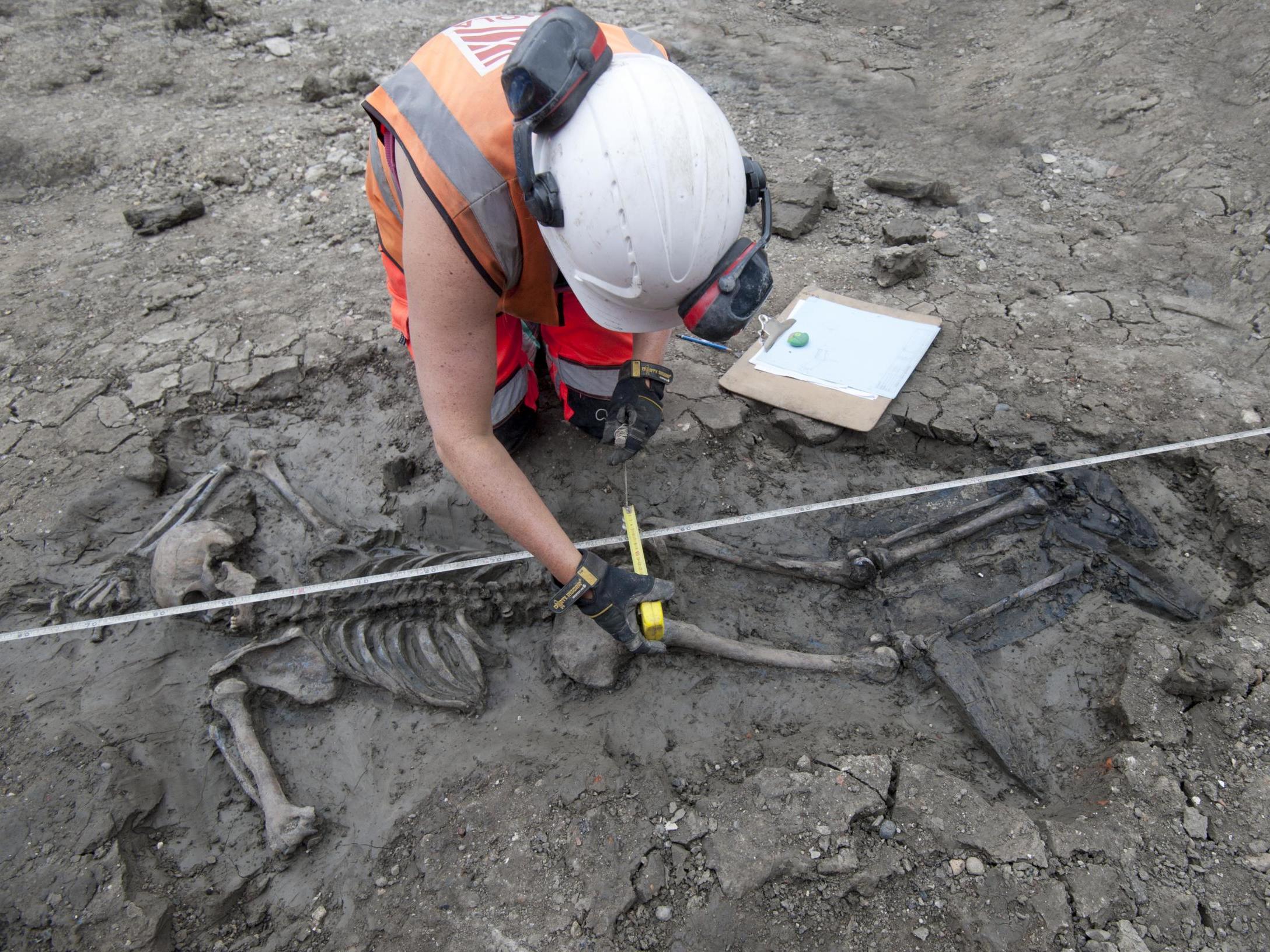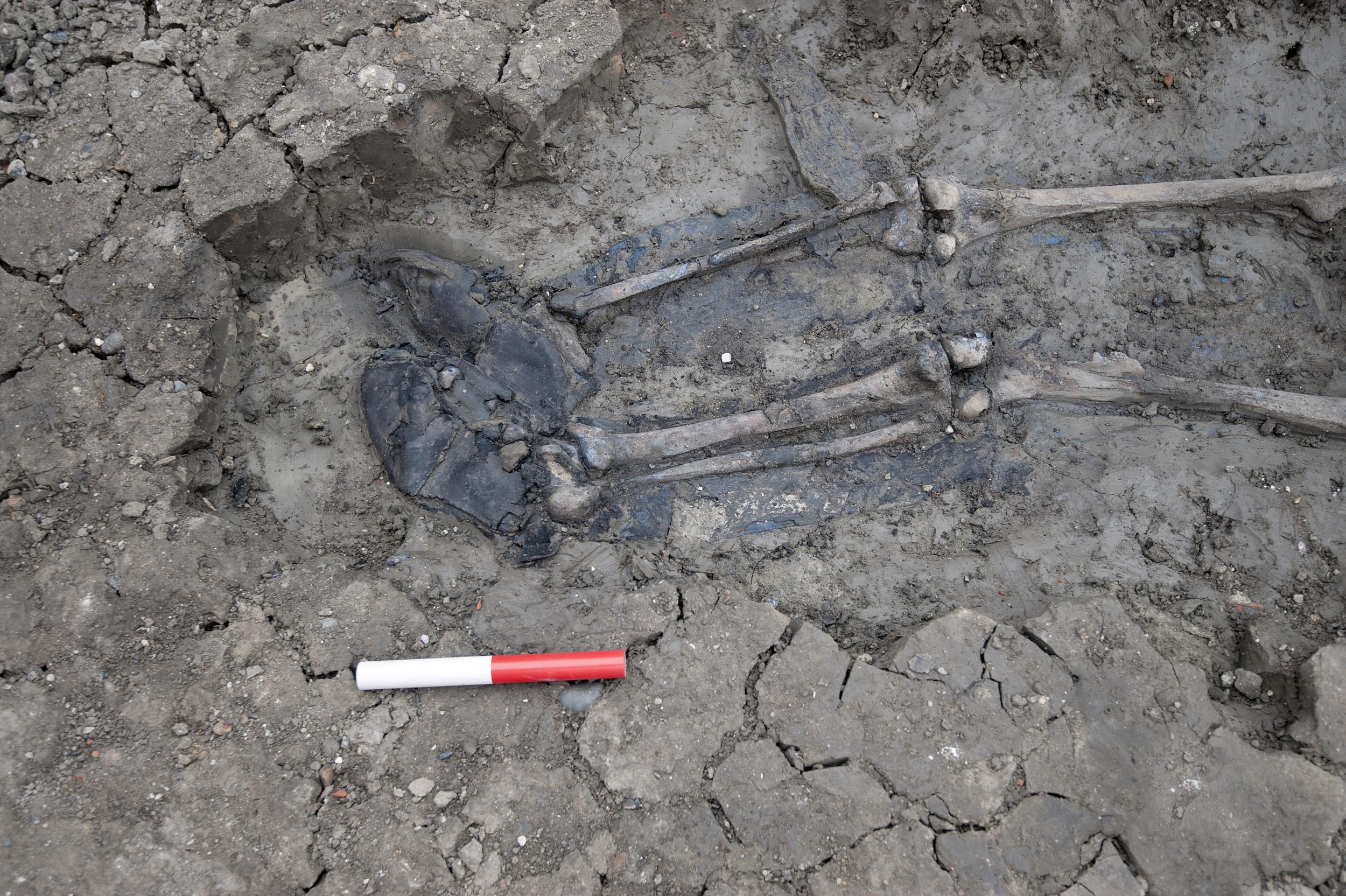500-year-old skeleton wearing leather boots found in River Thames
Remarkably well-preserved footwear provides 'fascinating glimpse' into man's life and death

Your support helps us to tell the story
From reproductive rights to climate change to Big Tech, The Independent is on the ground when the story is developing. Whether it's investigating the financials of Elon Musk's pro-Trump PAC or producing our latest documentary, 'The A Word', which shines a light on the American women fighting for reproductive rights, we know how important it is to parse out the facts from the messaging.
At such a critical moment in US history, we need reporters on the ground. Your donation allows us to keep sending journalists to speak to both sides of the story.
The Independent is trusted by Americans across the entire political spectrum. And unlike many other quality news outlets, we choose not to lock Americans out of our reporting and analysis with paywalls. We believe quality journalism should be available to everyone, paid for by those who can afford it.
Your support makes all the difference.Archaeologists excavating the site of London’s so-called super sewer have discovered the “mysterious” skeleton of a man wearing thigh-high leather boots.
The remains, though to be 500 years old, were found face down in the mud on the shores of the River Thames in Bermondsey.
The man’s resting position was unusual, lying on his front with one arm above his head and the other bent back on itself to the side.
Experts said this suggests he fell or drowned and was quickly buried under the silty riverbed as it moved with the tide.
His remarkably well-preserved footwear also provides clues about his death, according to archaeologists at Mola Headland Infrastructure, who are working on sites being used to build the Thames Tideway sewage tunnel.
The expensive leather boots, thought to be waders, were reinforced with extra soles and stuffed with an unidentified material – possibly moss – for warmth or comfort.
It indicates the man made his living from the Thames, possibly as a mudlark – who scavenged riverbeds for items of value – or a fisherman.

“By studying the boots we’ve been able to gain a fascinating glimpse into the daily life of a man who lived as many as 500 years ago,” said Beth Richardson, a finds specialist at Mola Headland. “They have helped us to better understand how he may have made his living in hazardous and difficult conditions, but also how he may have died.”
Osteologists who studied the skeleton found no evidence of any fatal injuries, but they did uncover further clues about the man’s life.
Deep grooves in his teeth are thought to have been caused by a repetitive action, such as the passing of rope used by fishermen.
Experts believe the man was under 35 years of age - yet his body already showed signs of damage by the time of his death, suggesting his job was highly physically demanding.
Niamh Carty, a human osteology expert, said: “Studying a human skeleton provides incredible insights that allow us to create osteo-biographies of a person’s life.
“With the booted man, examining his teeth has given clues about his childhood and marks on his skeleton have allowed us to proffer ideas about the aches and pains he may have suffered from on a daily basis, the toll his job took on his body and even a little about what he might have looked like.”
The skeleton was found earlier this year at Chambers Wharf, where excavations are taking place for the 16-mile, £4.2 billion Tideway tunnel.
Join our commenting forum
Join thought-provoking conversations, follow other Independent readers and see their replies
Comments